Behind the Curtain: The secret life of Hollywood “picture” cars
Chances are, you’ve watched a television show or a film in the past few days. Since you’re reading this on a website dedicated to all things automotive, you likely paid attention to the cars on screen. More than the average viewer would.
“I know I’ve seen that Volvo wagon before.”
“Why are there three Suburbans and one Expedition in that blacked-out motorcade?”
“Old Lamborghini and a younger driver—interesting choice. Wonder why they didn’t use something newer?”
I work as a motion-picture and television camera technician in the smallish coastal city of Wilmington, North Carolina. For decades, Wilmington has pretended to be many places. It recently stood in for suburban Denver in The Black Phone, for Woodsboro, California in Scream 5, and for Haddonfield, Illinois in Halloween Kills. Locals in my business are a tight-knit community, and we’re proud to host these high-profile projects. When a new show comes to town, we offer up every available resource to accommodate a production’s creative vision.

On good days, I spend much of my time attaching cameras to cars, finding creative places to put cameras inside cars, and preventing cameras from being destroyed by cars. Hot rods, rat rods, supercars, subpar cars, celebrity cars, cars owned by that weird guy down the street; when I get to work, they’re all just magically . . . there.
“Jeff, we’ve worked together for over a decade. You’ve never told me where any of these cars come from.”
He gives a casual side-eye, like George Burns in his prime. “You never asked.”
My friend Jeff McLaughlin owns Port City Picture Cars. His official title is Picture Car Coordinator, and when he’s hired by a production, he’s front and center for its vehicular casting and procurement, for the repairs those cars inevitably need, and for their eventual sale. You won’t see Jeff’s name near the top of any film credits, and if he’s working with a TV show, it likely won’t be included at all.
“There are two different types of shows,” he says. “The shows where directors tell you exactly what they want, and the shows where you can sit down with them and help figure out what they really need.”

Most of the time, Jeff can read a script and know immediately where to start his search—and what kind of creative automotive challenges the production will face. Where the story takes place, what the main characters do for a living, their ages, it all paints a picture of the fleet he’ll need to assemble.
If there’s a private jet written into the story, Jeff will likely need a high-end luxury vehicle or two to greet the aircraft on the tarmac at Wilmington International. The big-city location of a short cut scene will see him mentally lining up buses and a small fleet of Ford Crown Victoria taxis, to serve as background traffic on the few blocks of downtown Wilmington that can realistically pass for a metropolis. Local car clubs will likely be his first call for a flashback scene that will need period-correct vehicles in factory colors.

“This job,” he says, “is all about great networking and a little co-op-ertition. Everyone is competition, but we all have to work together.”
That “co-op-ertition” is a reality of working in the film industry. Think of us as circus carnies with health plans. We’re all temporary workers, never knowing where and what our next job might be. That picture-car coordinator you out-interviewed for your current job might know a trick to get that finicky ’72 Saab started. The Saab the director begged for. The Saab you predicted wouldn’t make it through the ten-week shoot. That Saab-whisperer is gonna save your job, and one day, you’ll return the favor with a referral to the best damn vinyl-wrap guy in town. The guy who can turn three Crown Vic police cars into taxis overnight. Co-op-ertition keeps everyone working.
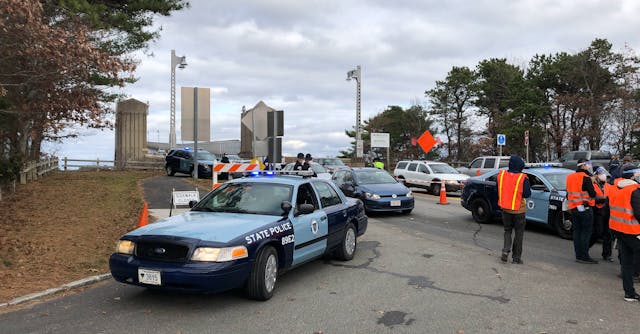
When a new production arrives—this time it’s a limited-run TV series—Jeff is invited to meet with the director, the producers, and a myriad of assistants. The first car they want to lock down is a director’s choice: a brown Ferrari for an actor who will be a series regular.
TV scripts can be incredibly descriptive when introducing new characters. Character development is often driven by . . . unconventional adjectives.
“This kid’s a douche. He needs to give off a rich douchey vibe.”
“We can get a brown Ferrari Roma out of Miami from a collector I’ve used before, but for the 20 days scheduled, it would cost us $45,000.”
In the world of picture cars, money adds up quick. Jeff knows that this particular Ferrari owner will stipulate covered transport with a specific kind of lift gate, that he has made climate-controlled storage a strict requirement, and that the production will need an additional insurance rider. For reference, the current Screen Actors Guild scale pay for actors in a major TV role, the union-mandated minimum, ranges from $6000 to $9000 per week, depending on episode length. Which means that Ferrari is more expensive to hire than the fairly recognizable human actor they’ve already cast, who was also in that other show you just saw. (You know, that guy from the thing.)
With the Roma, the producers winced. But Jeff had an alternative on deck.
“We also have a few local options. I can bring in a Lamborghini Murciélago in burnt orange. It’s a little older, but the owner isn’t asking nearly as much. If we can give him a few thousand a week and bring him out to the sets after we wrap, for a tour, it’s ours.”
Being able to offer owners an experience instead of money can be critical to securing many of these high-end vehicles, and Jeff is happy to oblige as best he can. Recent COVID precautions on set have limited visitor permits when actors and crew are present, but other perks can still sweeten the deal. Photos of well-known actors in or next to a car, or a special thanks in the credits, can go a long way. Sometimes, an owner can even finagle their way onto the screen as the driver of their own car.
Fiscal savings aside, Jeff liked the Murciélago as a safer bet for the show. He has a personal relationship with a certified Lamborghini service center (amazingly, this center is actually run by a guy named Tony), and the Murcie’s owner is more than happy to deliver the car. In the worst-case scenario, there are 15 similar orange Lamborghinis on eBay at any given time. The car can be recast fairly easily, if necessary.
The director agreed, and the “hero car” was set. Attention shifted to a future scene that will require multiple black SUVs. “Now what about the private motorcade in episode three?”
Most of the time, Jeff’s go-to plan for imposing, long-wheelbase SUVs simply involves renting a few from one of the big national rental outlets, then tinting the windows. Consumer rental cars are well-maintained, they’re registered for public roads, and they don’t need to be trailered to set. When the show is done, Jeff can simply remove the tint and turn the cars in, no one the wiser.
Still, as the rest of us know from just trying to find something to drive on vacation, the national rental-car shortage has really limited options.
“We can rent two Suburbans and an Expedition” Jeff told the director, “and throw a couple unmarked Chargers in there for filler. Availability may get better, but that’s what we can lock down today.”

In that case, Jeff’s second option was more of a moonshot.
“I have a contact at Mercedes in Germany. We could try to work out a deal with them to provide promotional vehicles for the run of the show. I think three G-Wagens would be ideal.”
The less exotic, yet still prominently featured, hero cars often have more humble origins, but they usually require the same deep networking. Jeff makes the call. Twenty-four hours later, he has a voicemail from a Mercedes rep asking what color trucks they should send, when he needs them, and where they should be delivered. The carmaker’s marketing people are familiar with the project, they’ve worked with this particular network before, and they’re motivated to get involved in the series early.
Sometimes it’s that easy. And sometimes, there are caveats.
Production accountants love for a show to have a direct relationship with a car manufacturer, but to the folks in the writer’s room, it’s just more work. Vehicular cast members often have to conform to a stricter set of rules than their fleshy human counterparts. Such as:
- No drunk driving
- No alcoholic beverages visible in the car
- The car cannot be used as a weapon
- If the car is to be in an accident scene, its driver cannot be at fault
- No sex in the vehicle
- Most importantly, all actors must be wearing their seatbelts when the vehicle is portrayed as moving.
Large carmakers like Stellantis have a separate marketing entity that ensures their products are being showcased accordingly, sometimes sending a representative to police the set. Other manufacturers just want to read the scripts in advance. More often than not, it’s up to Jeff and his team to make sure any guidelines are followed. With the average well-budgeted TV show costing between $15,000 and $20,000 per hour to produce, a prop or continuity miscue that accidentally puts a beer bottle in the hand of a driving actor might cost production $30,000 or $40,000 to properly reshoot. This sort of screwup is ultimately not on Jeff, but his relationships are at stake regardless.
When money is no object and the writers have carte blanche, the most common and straightforward way to cast cars simply puts the production company’s name on the titles: They buy the sheet metal. If it’s an older model, Jeff recommends getting two.
“Older, lower tech doesn’t save money. More breakdowns mean more lost time. You can save two hours of lost production time if you have a second car and a good paint or wrap guy.”

When working with a fleet of production-owned cars, Jeff explains, it’s imperative to have a silent army of “guys,” ready to take on any specialty automotive repair you can think of, on almost no notice.
“Paint guy, tire guy, bodywork guy, frame guy, all these guys love working with us. We get them involved and really make them a part of the show. Also, we pay fast.”
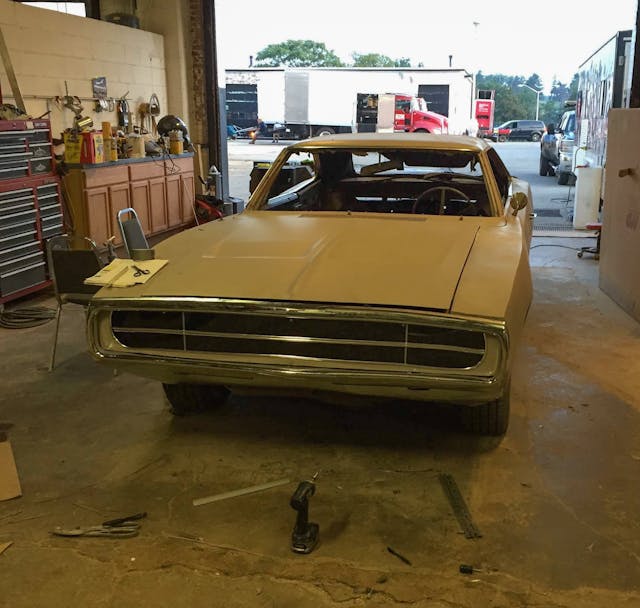
Most of these “guys” make their living from insurance work, which can take up to 90 days to produce payment. When the Volvo wagon that Jeff politely asked the eager stunt guy to not neutral-drop into a mild and yet catastrophic burnout comes back shifting flawlessly less than 12 hours later, the bill is paid immediately. After a background actor accidentally reverses a vehicle into the rear quarter of a production’s hero police car, Jeff is at the body shop, after hours, with a check.
When the first assistant director calls wrap, the show’s principal photography comes to a close. If the vehicles have no reshoots scheduled, the G-wagens are picked up promptly, the taxi wraps come off, and the production-owned picture cars are quietly put up for sale. Many times, the crew will get first dibs to make reasonable offers on the latter. Mostly, however, those cars wind up selling online unceremoniously, without being advertised “as seen in … ”
“The only way [anyone would know] these are picture cars is because the previous owner is listed on the title as 20th Century Fox or Paramount Pictures,” Jeff says. “Even then, most people don’t even notice. They sign the title, take it to the DMV, and a new one comes in the mail a few weeks later.”
Some of the more commonly used models will continue on as career picture vehicles, having already been painted ten or 15 times. There’s no need to take them down to bare metal—the body shop gets told to simply paint over the last coat, so the car can quickly be offered up for another show.

“I’ve had some with paint so thick, you can barely open the doors,” Jeff laughs. “A deep chip looks like a bite out of a gobstopper . . . You’re unlikely to find rust on any of ’em.”
He’s rarely sad to see them go. “I treat them all like they’re my own. A lot of them, I’ll see again.”
As for that newly transmissioned Volvo wagon, there are other plans.
“Another picture-car coordinator has dibs. He thinks it’ll make a great mom-mobile in a dark comedy that wants to shoot here next month,” he says. “That’s co-op-ertition.”

Check out the Hagerty Media homepage so you don’t miss a single story, or better yet, bookmark it.
***
Darwin Brandis is a motion-picture and TV camera technician from Wilmington, North Carolina. As his website so charmingly notes, he is “an avid automobile enthusiast who loves exotic cheeses and can run really, really fast.” This is his second story for Hagerty—his first was on selling a relative’s Ford to Carvana.

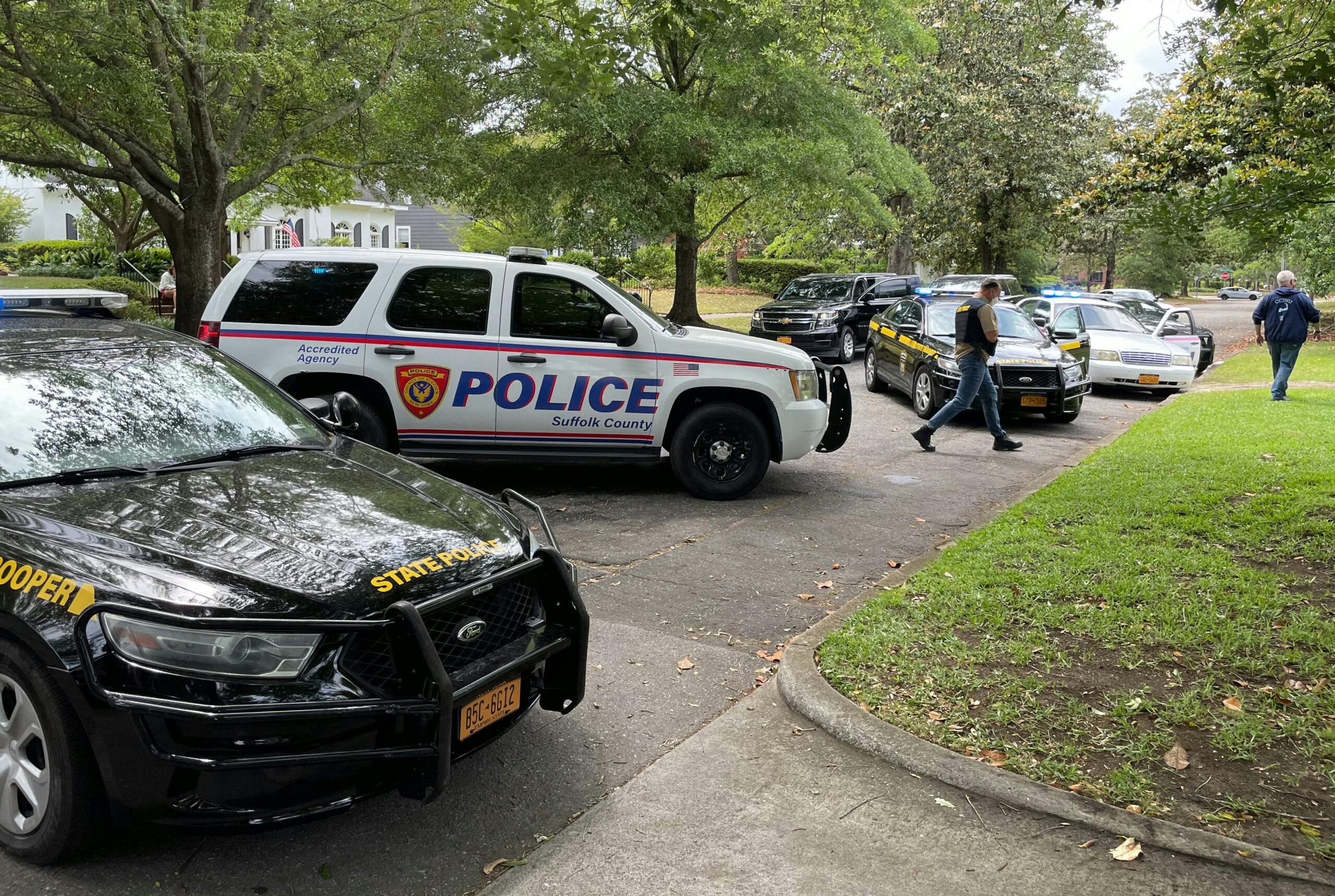
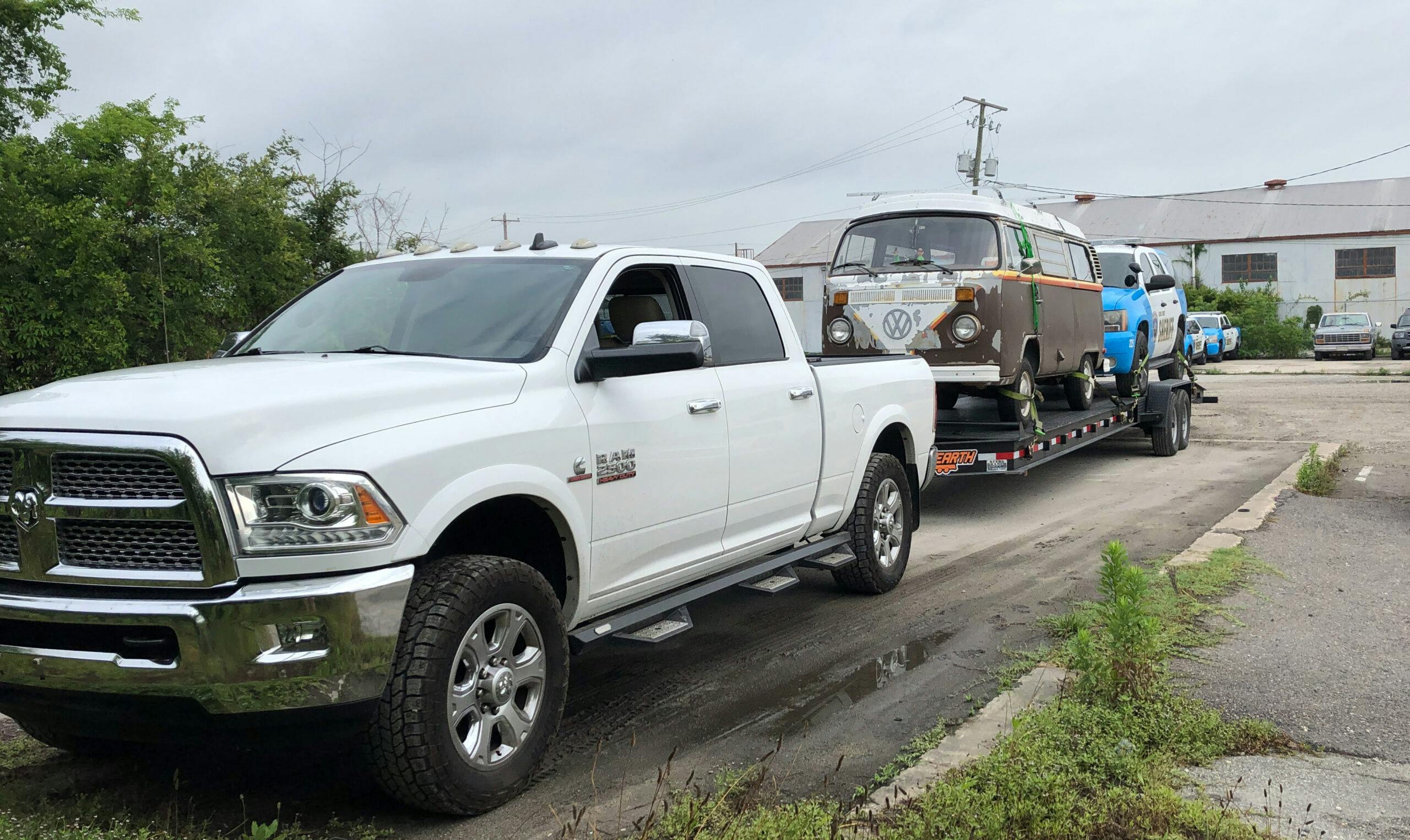
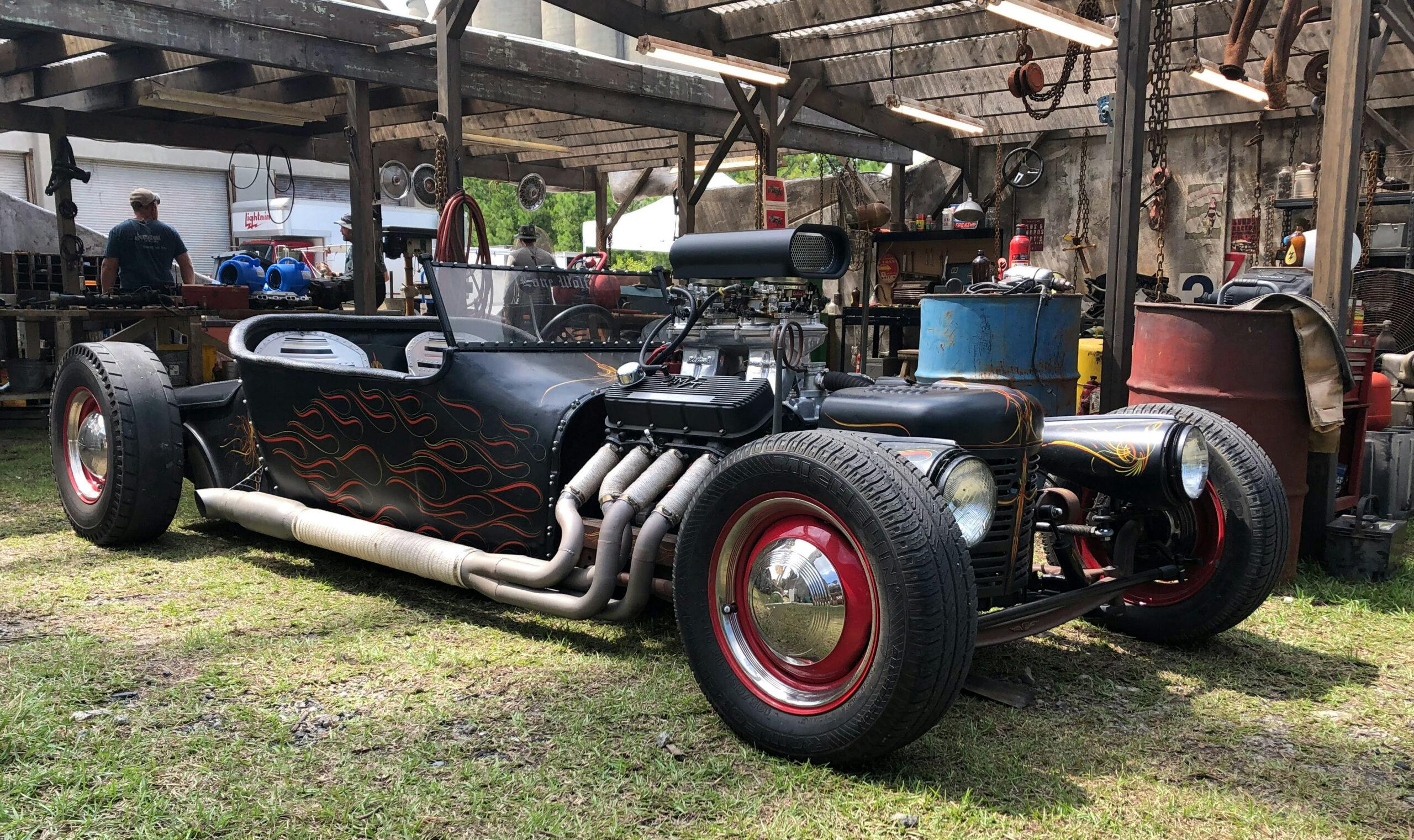
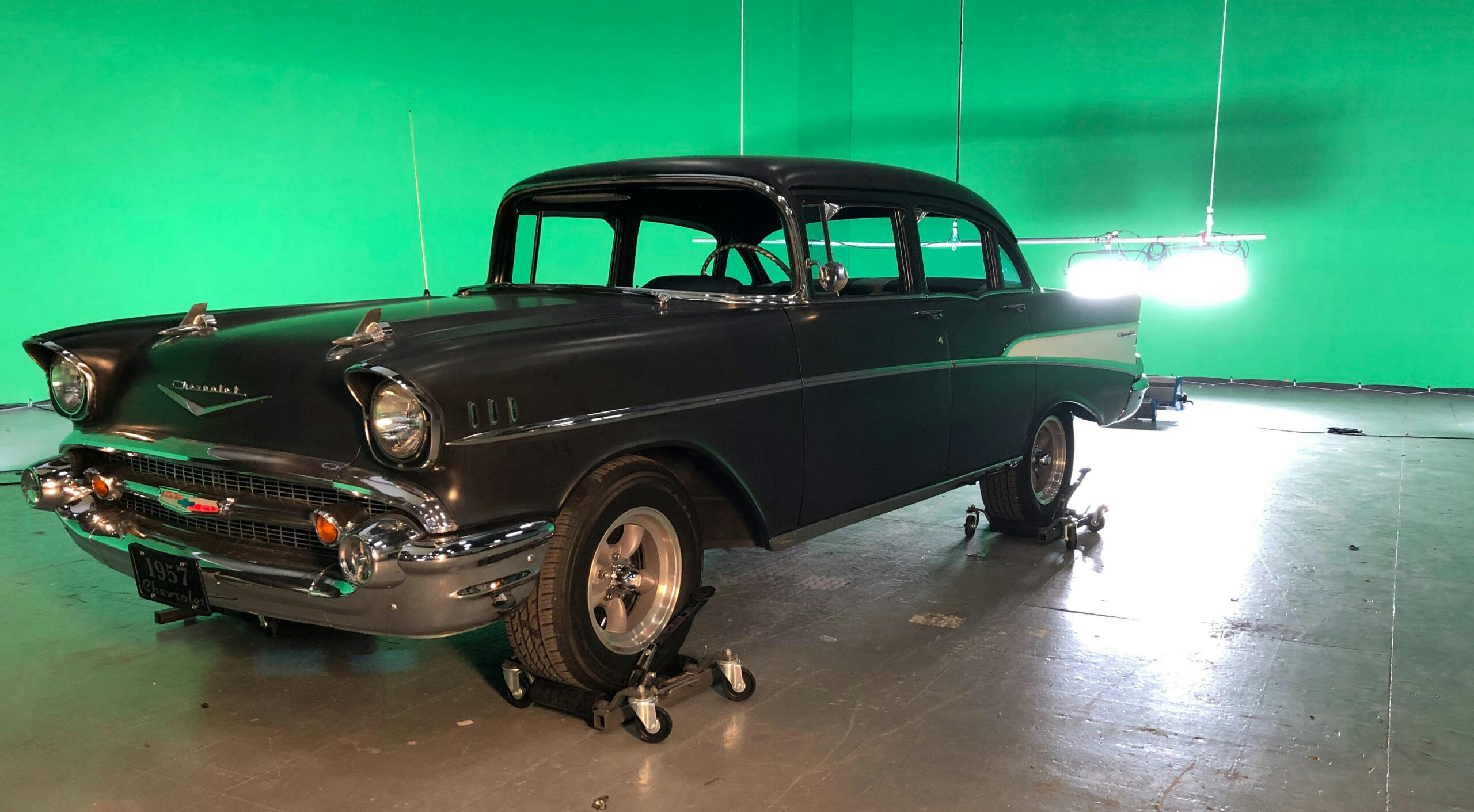
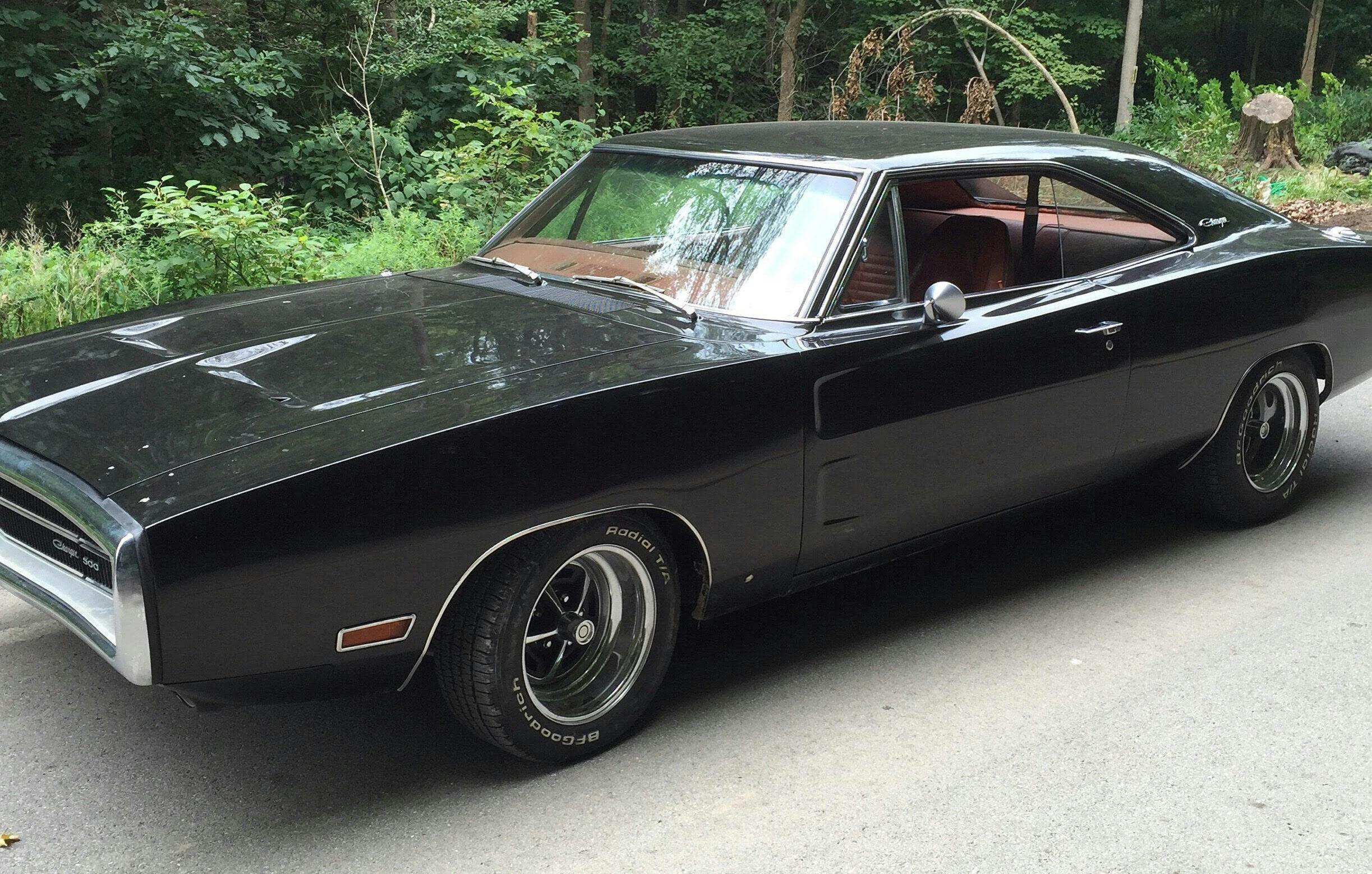
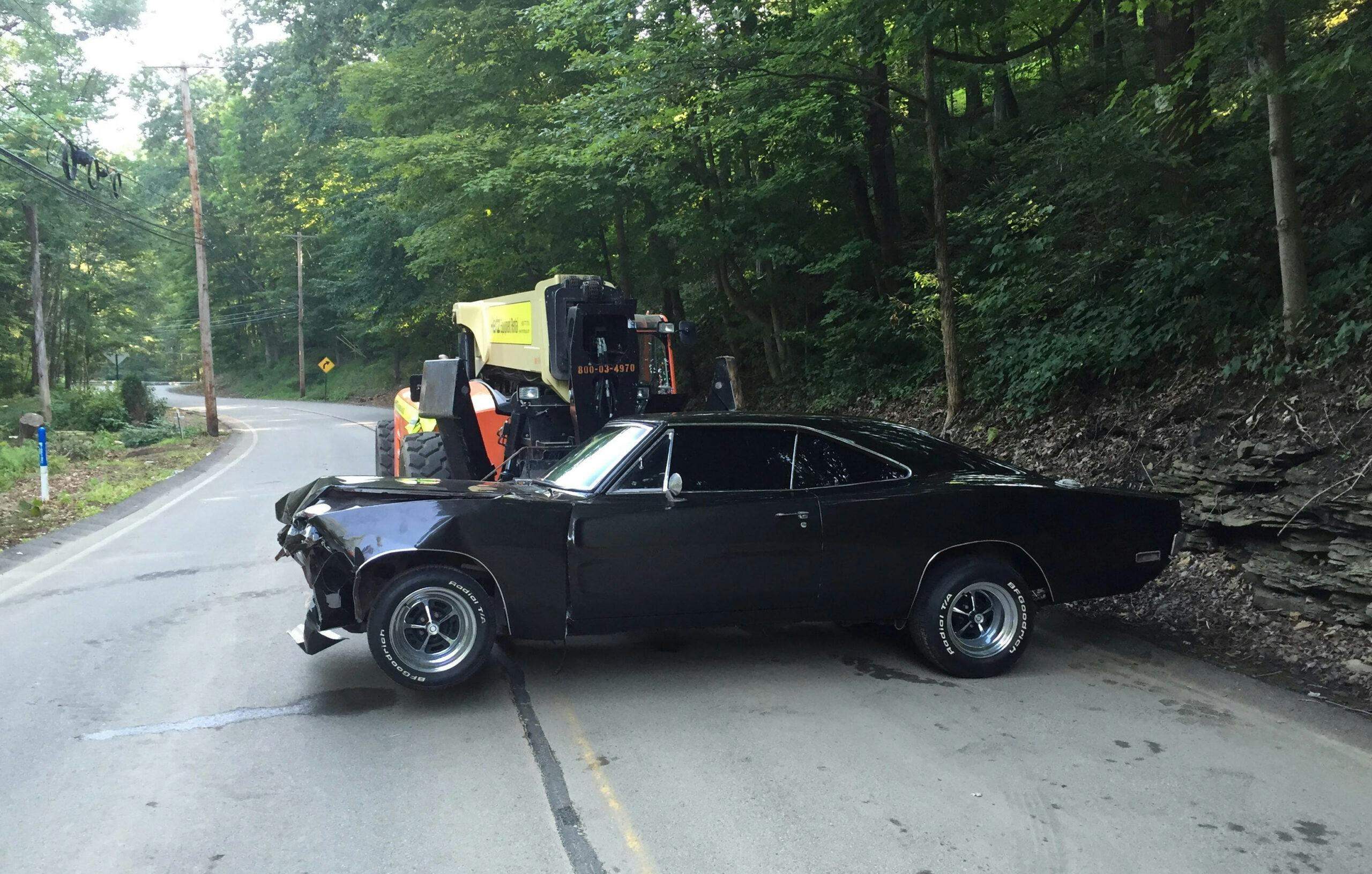
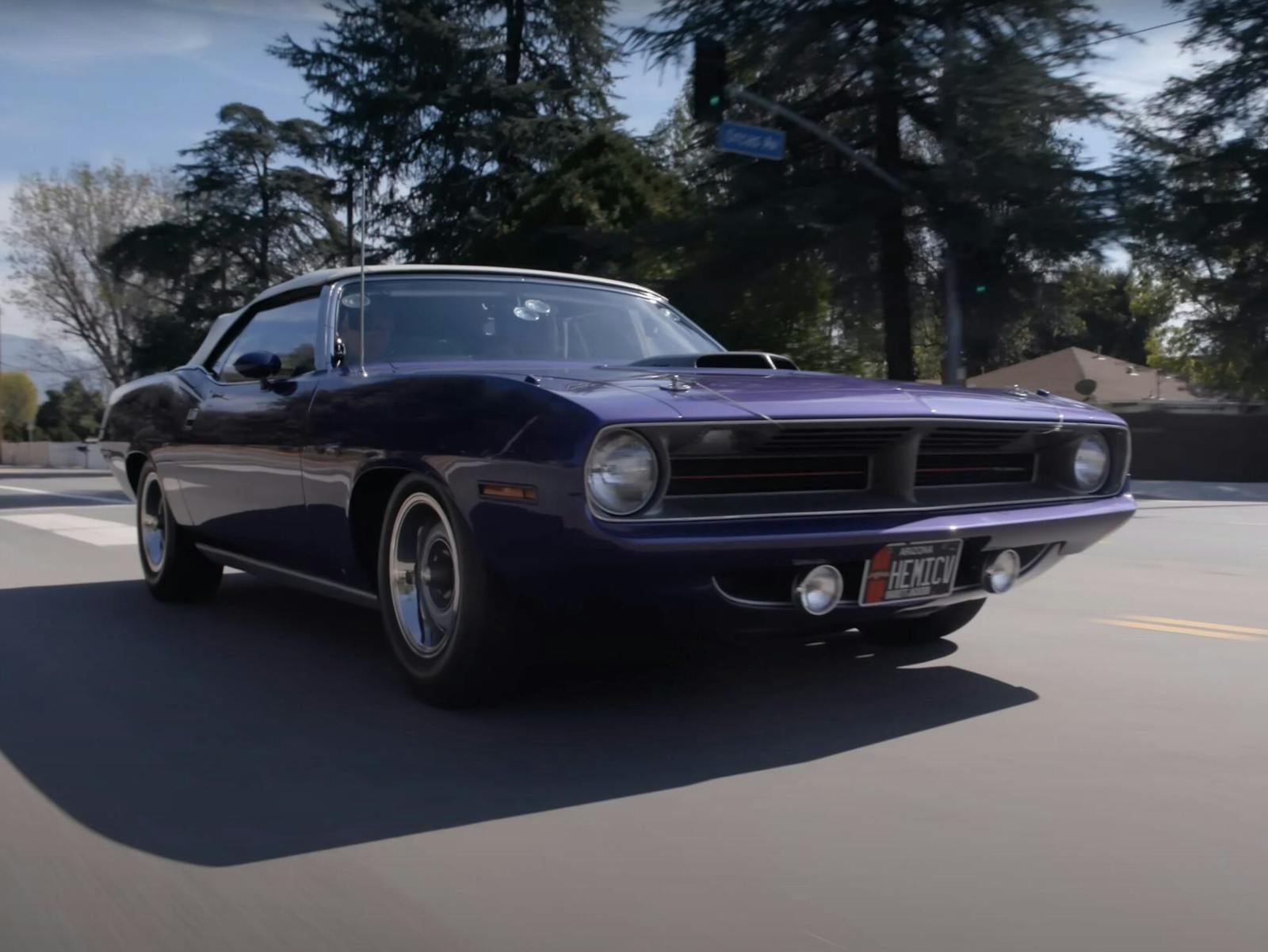

I have several early 30’s cars and a friend of mine was contacted to get some cars for a 30’s period movie. I though that would be a great opportunity. He arrived on site with his to nicely restored car. The prop group had to get it into charter for the movie. It was sprayed down top to bottom with something to make it look dull, drab and well worn. It took Jim a week to get his car cleaned up after three hours of filming.
Interesting article. Yes, we car enthusiasts pick up on many things the average person would not. Two of the bigger booboos I have seen were in famous pictures that should have had enough budget to avoid the mistakes. The first time I saw “The Last Picture Show” which was a great picture supposedly occurring in 1953, I was mortified to see a 1960/61 Falcon up on blocks in a background shot. More recently, in “Ford vs. Ferrari” I was aghast to see the Carroll Shelby character driving a 50s Aston Martin with a 1965 Plymouth Satellite pulling up behind. Shelby was leaving his Dr. office after having been told he could not race anymore (circa 1960, before building the Cobra). I hired out one of my 60s vintage sports cars for a television series event here in Atlanta. I was paid $400 for all day and was allowed to have lunch at the caterers table well after all cast and crew had picked it cleaned. I decided it was not worth it, so probably would not do it again…
“Mortified” and “Aghast” huh ? It’s a miracle you survived such an ordeal !!!!!!
My ’73 orange Bronco is my DD and goes out fairly regularly on shoots for shows, movies and commercials. I love it because my wife can’t complain when I buy parts as it’s earning it’s keep. 😉
Lemay family Collections at Marymount has at least a dozen at TV cars. From old pop cars from gangster movies, to lot trucks that are painted differently on all four sides to look like four different vehicles, to the Mercedes staff car from “Raiders of the Lost Ark” and a General Lee from the “Dukes of Hazard” TV show. A couple were even owned by members of the Rat Pack.
Jeff’s assistant was pestering me to use my old Malibu for a movie. I kept declining.
What sticks in my mind is a local guy in my hometown let a Hollywood guy like Jeff use is old original Packard for a Johnny Depp movie. The studio repainted the car in the wrong color, did some low quality body work, there was a box of parts that came with it, and some items were never returned.
Movies are big business, but if it is your pride and joy, maybe let them mess up someone else’s car.
When I was in grad school in Toronto (expensive place to live, then as now), every buck counted. A scout found my minty 1966 Buick Wildcat four-door sedan — bought the previous year, when I was working and had a bit of extra coin — parked on the street and left a note. I rented it to a dreadful production called “Murder One”, in which the car featured. The new paint job got scratched and they broke the motor mounts doing high-speed stunts (as I later discovered). It came back low on oil, with much more in damage than the paltry $1000 they paid me. Never, ever, ever again.
I recently retired from a 32 year career in the camera department for film and television production. It is *extremely* rare to find someone in the business who would allow a film to use either their car or their home. Let that be a lesson to you.
I was contacted by the producers of “The Right Stuff” through my car club. This is a movie depicting the Mercury Astronaut Space Program of 1961. They were looking for five early sixties black and white Lincoln 4dr convertibles for the celebratory barbecue scene near the end of the film. I had two and helped locate the rest. The barbecue scene was done at the Cow Palace in South SF. It was made up to replicate the Houstin Astro Dome in Texas. It is a four hour movie with humor, excitement, and a beautiful scene near the end portraying Sally Rand doing a fan dance to “Claire de Lune”. My wife and I spent a week on the set and enjoyed lunch with the stars. I am the driver of the second black Lincoln in the scene, a lifetime memory I will always have.
Nice article. Very interesting. I am indeed one of those car enthusiasts who especially notices vehicles in older TV shows or movies. I always remember watching an old Barbra Streisand-Ryan O’Neal romantic screwball comedy called “What’s Up Doc?” from 1972. The movie culminated in a wild car chase scene and I distinctly remember seeing the same early model Chevy Vega in at least two separate scenes. I remember this because my family bought a Vega when they first came out. I can laugh about it now but at the time it was pretty serious because the car was a rolling pile of junk that was an horrendous money pit for my mom and dad!:)
Careful what you wish for. Tech guys on productions are not very kind to these cars. If they need a light to be screwed in somewhere, they grab the screw gun and some self tapper screws and zip zip, now you have some new holes in your dashboard. Also, accidents happen all the time on sets. I have a 1962 Cadillac with drum brakes and a transmission with reverse on the bottom. No chance that will get noticed by the costumed extra as he is zipping along the back lot of the studio as he rear ends the car in front of him because it doesn’t stop like his new car, or can’t find reverse and revs it to the sky in neutral becuase he didn’t look at the gear selector. I would do it if I get to drive it. That might be a fun way to kill a day or two. Also, does our Hagerty insurance cover this activity? The car now becomes a for profit car, like an Uber. I wonder if they have anything to say about this.
excellent question re: Insurance. Most of us are here because we have Hagerty insurance, yet the articles rarely mention the Insurance aspect.
Next time you see a modern movie set in older times you will notice that a lot of the period cars look a little too good. Probably no one notices but us car guys. I have always believed they ought to blow a little dust or something on them to hide their beautiful restorations.
Llyod – I see the same thing and agree. To an extreme, I see older (think 50s thru 70s) cars used, in winter settings, with no body rot. Yeah, right. And monkeys might fly outta my butt.
I see in the back ground the VW Bus from The OBX show on Netflix, poor Van it deserves to be in a better show!
As a part-time gig, I’ve run a picture car agency in the SF Bay Area for the past 15 years. ‘Wheels Picture Cars’ has a portfolio of about 1400 cars belonging to local owners.
I realized long ago that people making movies have a very different approach to using cars as props than people making print ads, web ads, or commercials. Bottom line, I generally avoid working with movies.
My 63 Buick Skylark has been in a couple of Oregon filmed TV shows and movies. Always fun to see your car (and kids) on the big screen.
My father had a 1921 Hudson which was part of a Levi’s commercial back in the early 1990’s. If you blinked you would have missed it but I drove it with a bunch of “flapper” girls in the back complete with period correct tennis rackets and we all had specialty haircuts, a camera was mounted on the front, (the girls were cute too!). Anyway they paid us $200 a day for the car and $200 a day for us, huge catered lunches were included and cameo shots of the Levi’s president in the Hudson were included, easiest money I ever made!!!